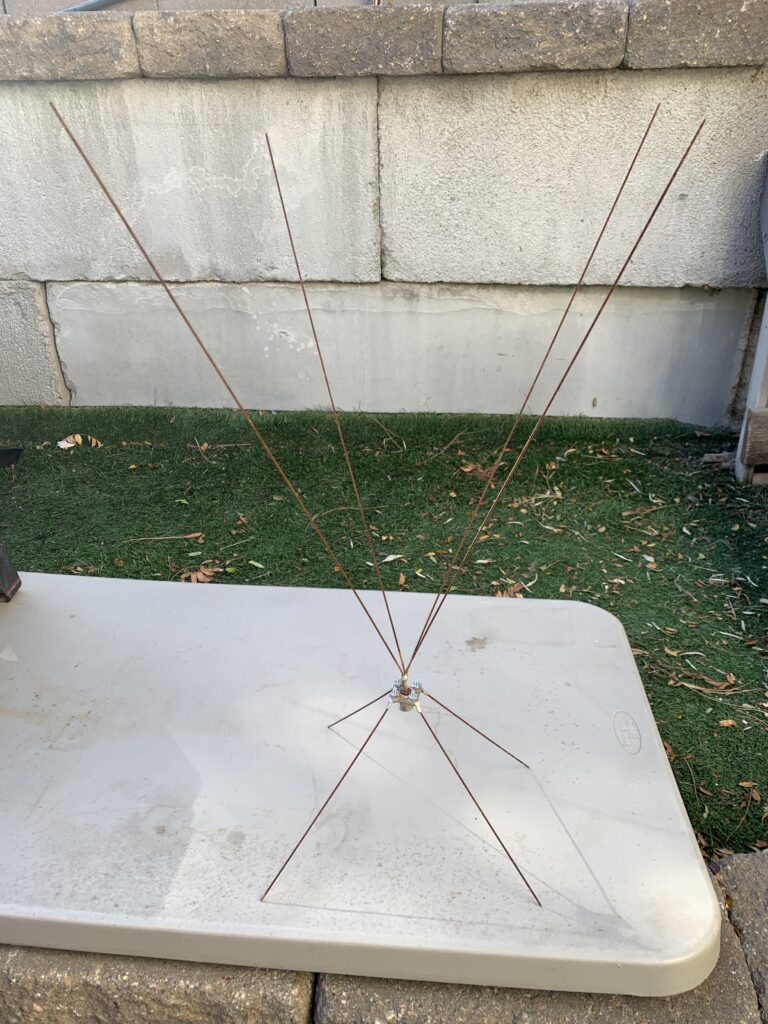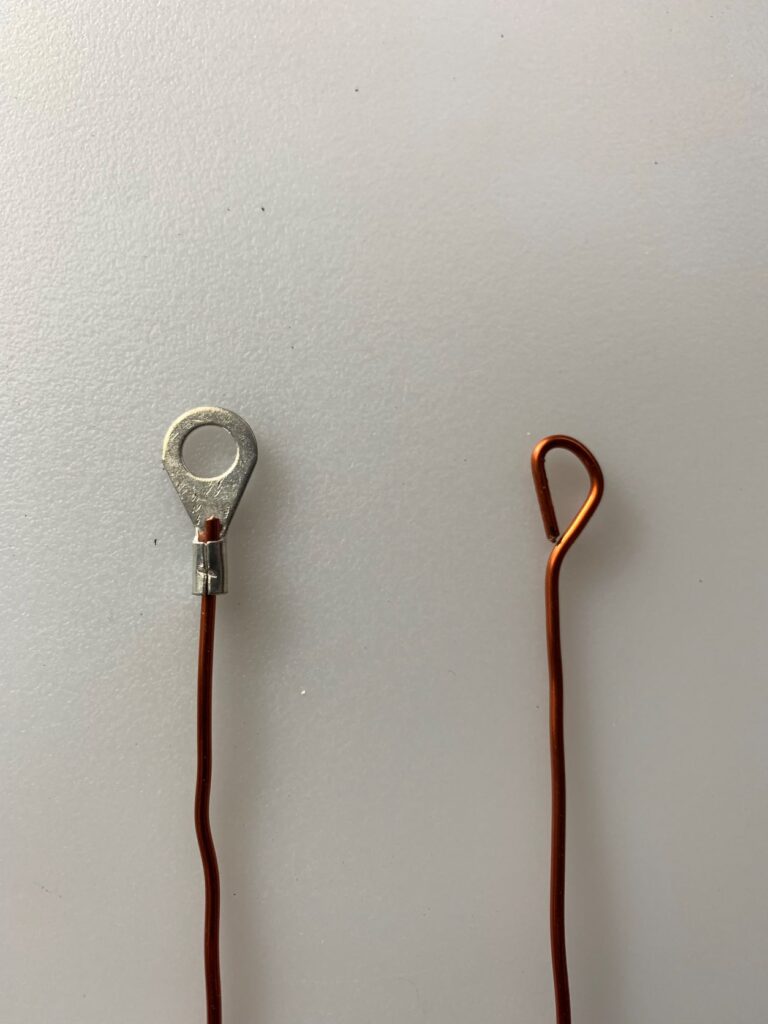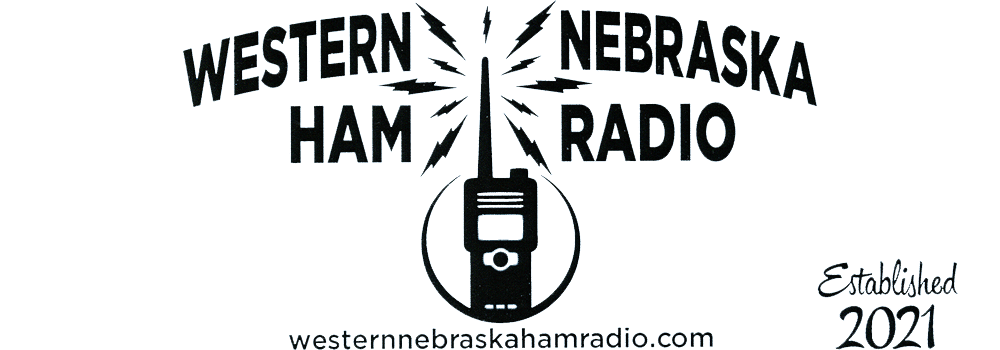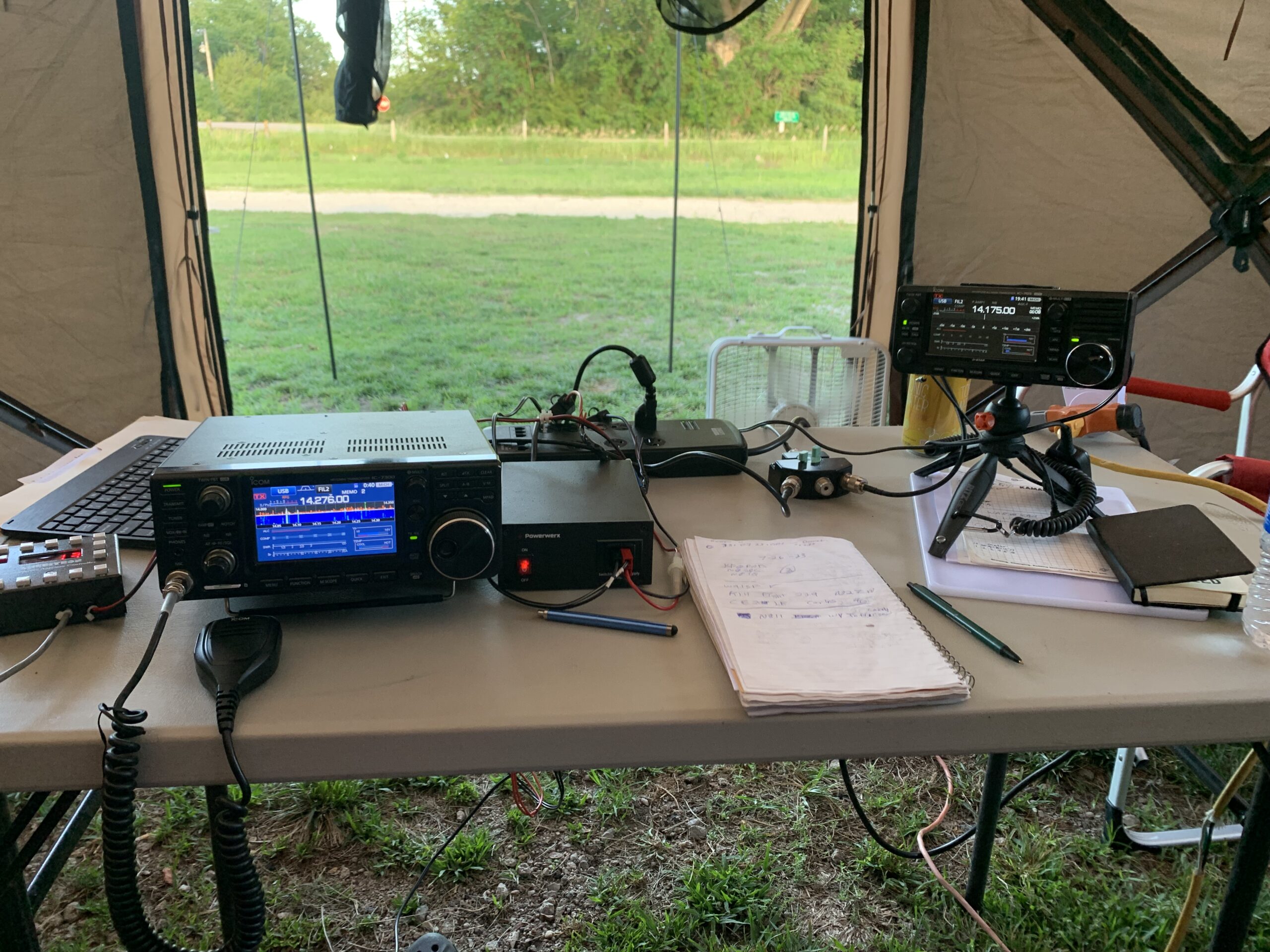Next step in to antennas is a bit harder to chose the type as designs seem endless. Let’s look at a simple inexpensive wire antenna for two meters.

Pictured is an experimental design by Mark Skinner KA0VNV using the same kind of parts.
Parts needed are a SO239, small screws with nuts and lock washers, wire, scrap solid copper wire is best. Tools needed are needle nose pliers, wire cutters, sand paper, a soldering iron, solder with flux core for electronics and black electricians tape. Common hand tools like a razor knife are helpful.
There are videos like this one on You Tube to show you how to make one.
My personal addition to the antenna is a eyelet on top of the antenna to hang it or a small loop in the wire will work. Don’t forget to include additional material in the tuning length. Weather proof the coax connection with electricians tape and hang it with non conductive string as an insulator and you’re ready to go.

73’s KF0FND
Mark KA0VNV uses programs like this to experiment with designs for specific effects.
Thanks Mark for the input.



6 Comments
Mark - KAØVNV
That was a fun project! We need to revisit that again for more testing!
KF0FND
Mark, summer was to hot and busy but I wanted to try a Antennas in the Park event where we could demo and share our ideas of portable operations. Currently working on a 39′ truck mounted mast. It would be a good day to test your ideas further
Luke - KF0LCN
I saw someone setup a CHA LEFS 8010 antenna in a park without the need for a tuner with good SWR and able to transmit using a Yaesu and portable power pack with foldable solar charger. I’m still think of my own setup and what I need for HF. Rick mentioned getting a ICOM 7300 to start out with. Just need to find out what kind of antenna would be ideal. Any feedback would be appreciated.
Rick
I built a DIY end fed 49-1 with 132′ very close to the one you mentioned. The wire is sloping up my hill from a tree 20′ straight up to the end 20′ above grade up plus the rise of the hill. The antenna works very well except on 75 meters SWR is OK (1.6) but the sound is low. 10 meter SWR is 1.4 20M is 1.1, 40M is 1.2, 80M1.2, 160M will work but with a tuner. Most of the Nets I work are at 3.950-.990 which is 75 meters 1.6+ SWR and I chose to use a tuner with an 800 watt amp, noise band. The in between bands 15 and 17 meters are 1.1 and 1.2 Swr. All will tune using the radio internal tuner most have today. SWR and performance is all variable by surroundings and heights. I have talked to Europe and Japan with only 10 on this antenna so when conditions are right it works real well. Making my own antennas save a lot of money to spend else where. Good kuck!
Mark
Luke,
There are a multitude of different types and manufacturers of radios. The “Big 3” were always Kenwood, Icom, and Yaesu – but there are numerous other brands out there now. A major consideration on radios is cost. How much do you want to spend? New radios can be pricey, and used radios can be a great way to ease into things – although some used radios can be suspect. OR, if you’re really into things – as a ham, you can actually BUILD your own radios and experiement. The ICOM 7300 radio is a nice all-mode HF radio. The ICOM 9700 is a VHF/UHF all-mode companion to the 7300. Both radios have waterfall displays which is helpful in finding activity on a band. Yaesu’s FT-991A is a nice and compact HF/VHF/UHF all-mode radio. Kenwood has gone kind of quiet in the last couple of years (I suppose due to COVID), but they have a TS-590SG all-mode which is HF+6m. Anyway, when you sort out the radio situation then you can decide on antennas and feed lines. The easiest and least expensive antenna to build would be a dipole (inverted vee if you slope the ends down from the feedpoint). You just need to come up with the appropriate length of wire – and it can just be old speaker wire you ran across as long as you can make a good electrical connection with it to your feed line. A dipole can be made with traps if you want to work more than a single band and want to save room. There are many elaborate types of antennas as well if you want to go commercial. Hams have historically been notoriously cheap and home-built antennas are a good way to keep that legacy alive. A new ham wants to work every band/mode available, but sometimes time and real estate dictate otherwise so remember to keep that in mind. My current station consists of a Kenwood TS-2000 HF/VHF/UHF all-mode with a full-size 75M loop antenna about 23′ off the ground fed with 50 ohm coax to a 1/4 wave section of 75 ohm coax to the antenna. I also have a 6M square loop fed at the bottom for horizontal polarization. 2m/440 I use an old but very reliable Diamond H510 vertical base antenna. Anyway, I ramble. Have fun! — Mark KAØVNV – Ogallala
Rick
Transferred from the For Sale post
I have an old Yaesu FT-2500H that has a little issue. It’ll transmit fine, but receive audio is intermittent. I think the radio is actually receiving just fine, as when you open the squelch, you can see the SU meter indicating noise, but there is no audio. Want a project to play with? If so, it’s yours! Free gratis!
Bill
N0HTC